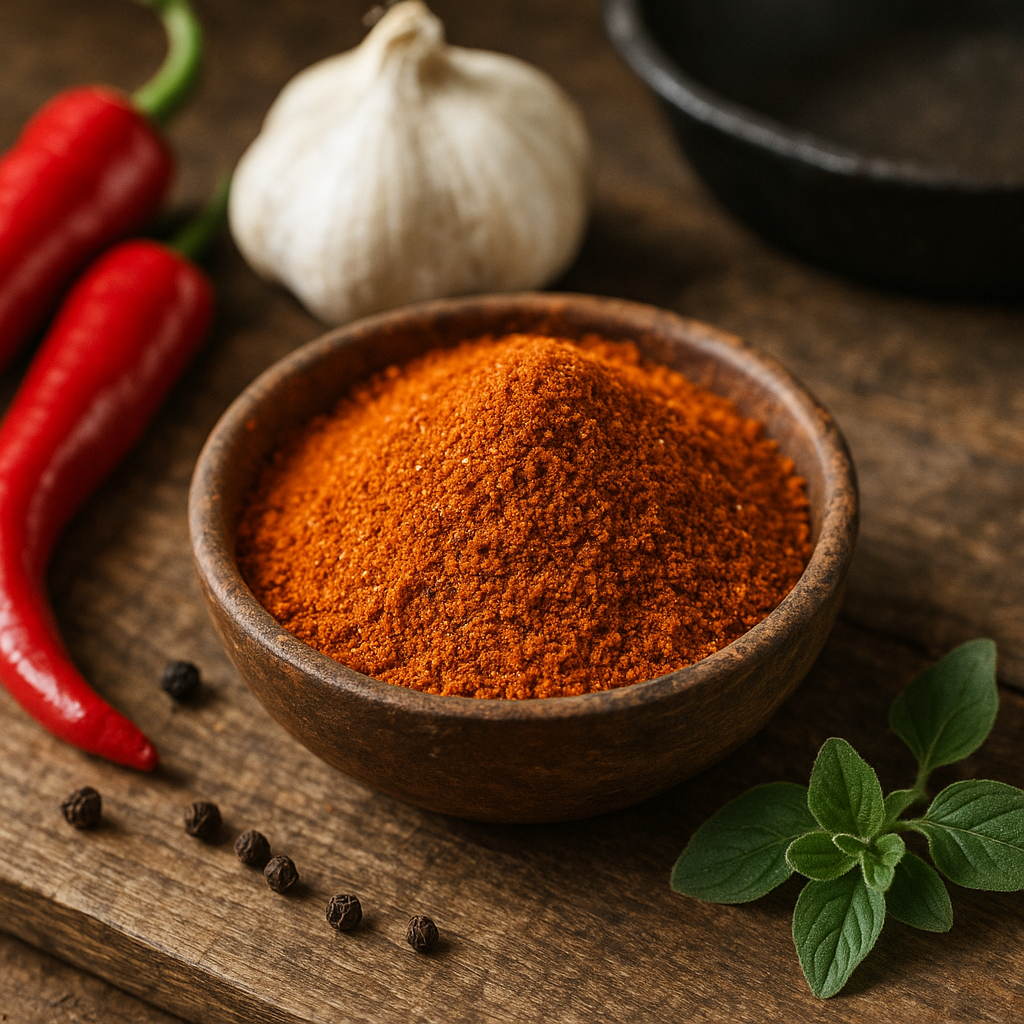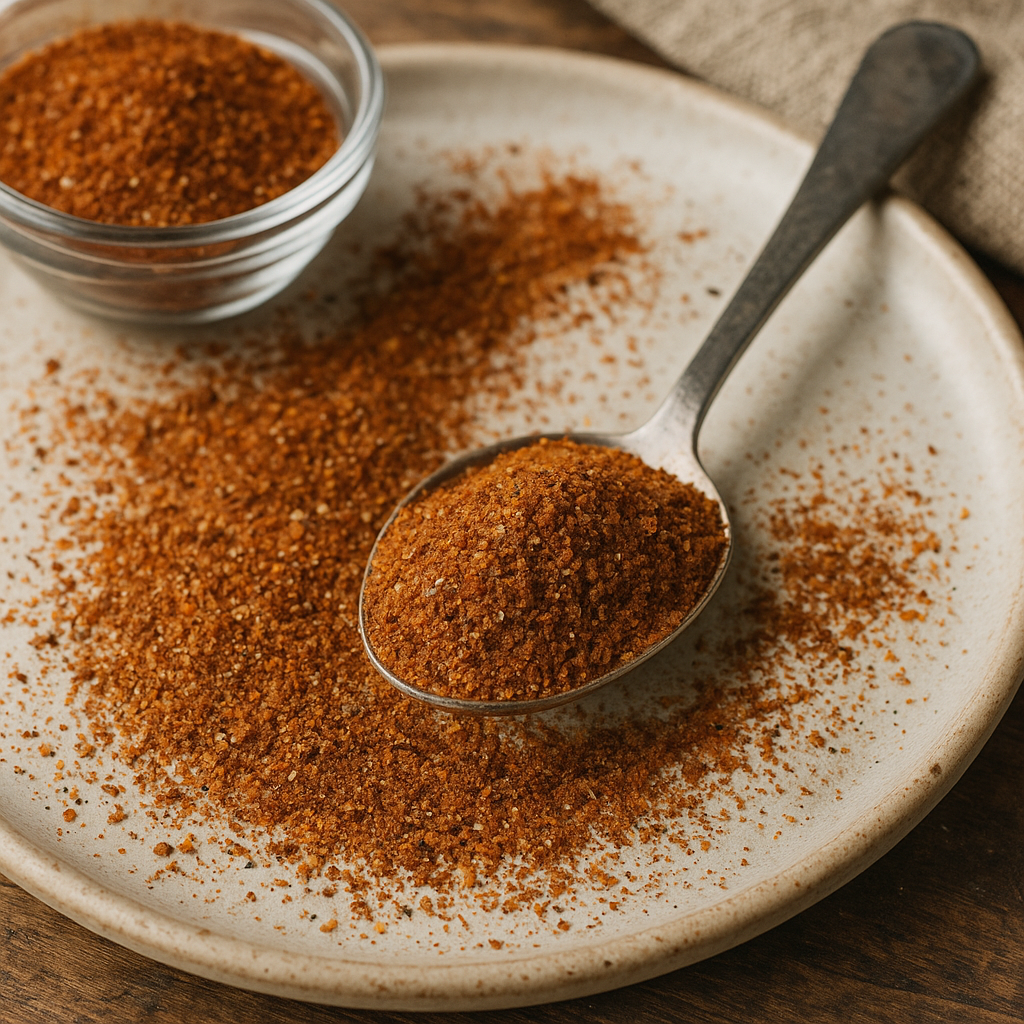Ask Ayurvedic doctor a question and get a consultation online on the problem of your concern in a free or paid mode. More than 2,000 experienced doctors work and wait for your questions on our site and help users to solve their health problems every day.
Shop Now in Our Store
What Is Cajun Spice? Meaning, Blend, and Culinary Uses

Cajun spice is one of those bold, sassy seasoning blends that instantly perks up a dish. If you've ever wondered what is Cajun spice or caught yourself squinting at a recipe asking for it, you're not alone. It’s flavorful, fiery, and versatile — a kitchen essential for anyone who loves food with character.
In this article, we’ll dig into the Cajun spice meaning, explore its cultural and culinary roots, uncover what Cajun seasoning is made of, and show you how to actually use it in your meals (spoiler: it's good on almost everything). Whether you're a curious foodie or a home cook looking to spice things up, you’ll leave here with a solid grip on what Cajun spice really is — and maybe even a new favorite blend to keep on hand.
Let’s start with where it all came from.
What Is Cajun Spice and Where Does It Come From?
Cajun Spice Meaning and Cultural Background
So, what is a Cajun spice? It’s more than just a mix of heat and herbs. The term “Cajun” refers to the Acadian people — French settlers who were expelled from Canada in the 18th century and eventually settled in Louisiana. They brought their rustic, resourceful cooking style with them, which evolved into the vibrant Cajun cuisine we know today.
The Cajun spice meaning reflects this blend of heritage and geography. It's about making the most out of simple, locally available ingredients, and turning them into something powerful and delicious. Over time, Cajun seasoning became the signature flavor of this deeply rooted, spicy-soulful cooking tradition.
Cajun Spice Origin: Louisiana and French Influence
When you think Cajun spice origin, think bayous, gumbo pots bubbling over wood fires, and French-meets-Southern flair. Louisiana’s swampy climate provided access to wild game, freshwater fish, and native herbs. Combine that with French cooking techniques and a need to stretch ingredients, and boom: a robust seasoning style was born.
It’s interesting how Cajun spice seasoning came from such humble beginnings — no fancy imports, just everyday ingredients like paprika, garlic powder, onion powder, black pepper, and cayenne. It's spicy, but not burn-your-mouth (unless you want it to be).

What Is Cajun Spice Made Of?
Core Ingredients in a Cajun Spice Blend
So, let’s break down what is in a Cajun spice mix, exactly?
Most Cajun spice blends have a few key players:
-
Paprika (often smoked)
-
Garlic powder
-
Onion powder
-
Black pepper
-
White pepper
-
Cayenne pepper
-
Oregano
-
Thyme
These are the classics. Some blends also sneak in salt, dried basil, or even a pinch of sugar to round it out. The balance between the herbs and the heat is what gives Cajun spice its signature kick.
What Makes Cajun Seasoning Spicy and Smoky
The spice mostly comes from cayenne, while smoked paprika or chipotle powder adds that deep, woodsy smokiness. Not all blends are created equal though — some store-bought ones are mild, while others might set your tongue on fire. Just depends on who’s blending it and what the intended use is.
And hey, if you’re wondering what is Cajun spice blend good for — it’s not just for meats. But we’ll get to that in a sec.
Store-Bought vs Homemade Cajun Spice Mix
Here’s the thing: store-bought Cajun spice mixes are super convenient, but they’re not always consistent. Some are too salty, others skimp on herbs. Making your own at home gives you control. Want it hotter? Add more cayenne. Want it smoky but mild? Easy — just tweak the paprika.
Also, no weird fillers or anti-caking stuff. Homemade always hits better.

What Is Cajun Spice Used For?
Common Dishes That Use Cajun Seasoning
Cajun seasoning is kind of like that friend who gets along with everybody — it fits into tons of dishes and always adds something special. One of the most iconic ways it shows up? Blackened dishes. Think blackened chicken, blackened shrimp, or even blackened tofu if you're going meatless. The spice blend is rubbed onto the surface and then seared in a hot skillet until it forms a tasty crust. Firey, crispy, and packed with flavor.
Jambalaya, gumbo, and étouffée are also prime examples of dishes that owe their punch to Cajun spice. But don't stop there. It can go in:
-
Roasted vegetables
-
Popcorn (seriously—try it)
-
French fries
-
Mac and cheese (yes, really)
-
Eggs and breakfast potatoes
-
Even cocktails — spicy Cajun rim on a Bloody Mary? Yes please.
You get the idea. Once you start using it, you’ll kinda wonder how you cooked without it.
How to Use Cajun Spice in Everyday Cooking
If you’re just starting out, sprinkle Cajun seasoning on roasted chicken or toss it with shrimp before grilling. It also mixes beautifully into rice dishes, stews, or pasta. Pro tip: Add it to breadcrumbs when making fried foods for an extra layer of flavor. Game changer.
Because the blend contains a mix of both spicy and earthy herbs, it's super flexible. A little goes a long way, though. Especially if the mix is heavy on the cayenne. Start with a small amount — like 1/2 tsp — and build from there.
Oh! One more thing — be careful about layering it with other salty ingredients. Some Cajun spice blends already contain salt, so you don’t want to end up with a sodium bomb. Not cute.

Cajun Seasoning Health Benefits and Considerations
Spices in Cajun Blend That Support Digestion
You might be surprised to learn that many of the ingredients in Cajun spice seasoning actually offer health perks. For instance:
-
Cayenne pepper can boost metabolism and support digestion
-
Garlic and onion powder contain antioxidants and antimicrobial properties
-
Oregano and thyme are anti-inflammatory and can support immune function
So yes, it’s tasty — but it’s not just empty flavor. There’s a little wellness in every pinch.
When to Limit Use
That said, not all Cajun spice is created equal. Some commercial blends are packed with salt, preservatives, or artificial flavors. If you’ve got high blood pressure or other dietary restrictions, read those labels carefully. Or better yet, make your own so you know exactly what's going in.
And if your stomach’s sensitive to spicy foods (hi, fellow heartburn folks), go easy on the cayenne. Your taste buds will thank you, and so will your insides.
Also, a small but real issue: it can stain. White shirts + Cajun seasoning = laundry regret.
How to Make a Milder Ayurvedic-Friendly Version
Looking for a gentler version of Cajun spice mix? Try this Ayurvedic-friendly adaptation:
-
Use sweet paprika instead of smoked
-
Swap cayenne for a tiny pinch of black pepper or turmeric
-
Go lighter on garlic and onion powders
-
Add fennel seed for digestive balance
It won’t have the same fire, but you’ll still get that complex herbal warmth. Perfect for sensitive systems or family-friendly meals.
Conclusion
So, what is Cajun spice, really? It’s more than just a seasoning — it’s a cultural expression, a flavor bomb, and a tool that can completely transform a boring dinner into something you actually want to tell your friends about. From its humble Cajun spice origin in Louisiana’s bayous to kitchens across the world, this bold blend continues to deliver heat, heart, and history.
We’ve covered a lot here: the meaning of Cajun spice, what it’s made of, how to use it, even how to tweak it for health or gentler palates. Whether you’re buying it at the store, mixing your own, or just experimenting with it for the first time — there’s really no wrong way to Cajun.
If you're curious or newly inspired, try tossing some on roasted potatoes tonight. Or maybe go big and make your own blackened chicken pasta. Trust me, the flavor payoff is totally worth it.
Cooking should be fun, and Cajun spice? It’s basically flavor fun in a jar.
FAQs
What is in a Cajun spice mix?
Good question. A classic Cajun spice mix usually contains:
-
Paprika (often smoked for depth)
-
Garlic powder
-
Onion powder
-
Black pepper
-
White pepper
-
Cayenne pepper
-
Oregano
-
Thyme
Some versions also include salt, dried basil, and even a little sugar for balance. The beauty of Cajun blends is that they're flexible — so you can adjust depending on what you're cooking or how spicy you want it.
Want it salt-free? Easy. Want it extra-hot? Go heavier on the cayenne.
How spicy is Cajun spice compared to other blends?
Honestly? It depends. Some Cajun blends are pretty tame, while others come in hot — like, unexpectedly hot. If you're used to something mild like Italian seasoning or lemon pepper, Cajun spice might feel like a jump up on the heat scale.
But compared to ultra-hot blends like ghost pepper rubs or some Indian masalas? Cajun is more like a medium. It's got bite, but it's not going to ruin your dinner — unless you go wild with it (which, hey, we've all done once).
If you're spice-sensitive, try a small sprinkle first. Build the heat gradually instead of nuking your taste buds straight out the gate.
Bonus Tips for Using Cajun Spice
Here’s a few last-minute thoughts that didn’t quite fit earlier:
-
Mix Cajun seasoning with mayo or sour cream for an easy dip or sandwich spread.
-
Stir into softened butter and spread on corn-on-the-cob (chef’s kiss).
-
Use it as a dry rub on grilled corn, tofu, or fish.
-
Blend it into pancake batter for a savory brunch twist (okay, this one’s weird, but kinda works?!)
And just in case you missed it — keep a batch in a jar in your spice cabinet. Label it. Love it. Use it often.
Whether you were wondering what is Cajun seasoning out of curiosity or needed real cooking tips, I hope this helped. If you found this article useful or fun (or both?), please share it with a friend, bookmark it, or even make your own blend and tag it online. Because good food — and good flavor — should always be shared.
Feeling inspired? Try mixing your own Cajun spice blend this week and give your meals a flavorful twist.
This article is checked by the current qualified Dr Sujal Patil and can be considered a reliable source of information for users of the site.

